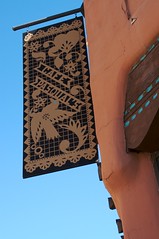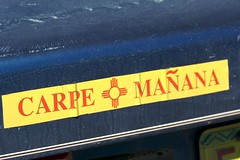Wednesday, October 03, 2007
Name the year: in January, a huge earthquake hit Kobe in Japan, in April 169 people were killed in the Oklahoma City bombing, and there was an ebola outbreak in Zaire in May. In October, O. J. Simpson was acquitted of double murder.
In the entertainment world, Sony released the first PlayStation, ‘Forrest Gump’ won the Best Film Oscar, and the album releases included Leftfield’s ‘Leftism’ and ‘The Bends’ from Radiohead.
Economically, things were looking up in Ireland. Encouraged by tax breaks and a skilled young workforce, 30% of all US high-tech investment in Europe was coming to the country, led by companies such as Microsoft and Gateway. Overseas investment in Ireland created 6,500 new jobs in the year. Irish-owned companies were also enjoying success – in April CBT Systems became the first Irish firm to be quoted on the tech-heavy NASDAQ.
Still not sure when all this happened? It was 1995, the year that also saw the foundation of a company that was to become the high-profile poster-boy of Irish internet start-ups.
December 1995 – 16 million people online worldwide
Nua was the brainchild of Gery McGovern, a jobbing journalist originally from Longford, and Niall O’Sullivan, who ran a design shop, O’Sullivan Associates (OSA), producing architectural models, product design prototypes and computer graphics. McGovern was writing for Hot Press at the time, but in the early 90s he’d been on the other side of the microphone, performing as a rap artist at The Underground on Dame Street. The Underground went on to become the lap-dancing club Lapello; McGovern went on to become CEO of companies with a combined valuation of around �100 million.
O’Sullivan was working on early designs of a new type of football boot with the former Liverpool footballer Craig Johnston (the boot would evolve into the Adidas Predator), and he called in McGovern to help with the marketing documents for the job.
McGovern had written a report for the government development agency Forbairt called ‘Ireland: the digital age, the internet’, and he persuaded O’Sullivan that this area was something they should explore as a business. “I’d always thought wouldn’t it be great to be around at the beginning of something?” recalls McGovern. “And I felt from the first time I saw the internet that it would create a revolution of some sort.”
They looked for someone with an understanding of the underlying technology, and found Antoin O’Lachtnain, who was then a psychology and philosophy student at Trinity. A quietly spoken, slightly stooped young man who never seemed completely comfortable in his own skin, he had been helping out at the fledgling ISP Internet Eireann when he ran into McGovern.
Up to this point the internet had been the preserve of an intense, idealistic and technically literate community. However, the birth of the browser that had prompted Netscape’s stellar debut on the NASDAQ was also making the internet much more accessible to a wider audience.
In October 1995 Wired magazine voted ‘Quantifying the Net’ top of its hype list, declaring, “As businesses move onto the Net, their first instinct is to map it. Hence the hype surrounding demographic everything from web-user tracking to demographic studies to smart indexes.” They came to a baleful conclusion, “The Net is going to start looking very different – and a lot more prosaic.”
Things might have seemed prosaic to the dudes at Wired (in the same issue they judged it ‘tired’ to have an email address on your business card, preferring a new-fangled URL), but they seemed pretty exciting for the Nua founders. The new company moved into OSA’s studio off Westland Row, and borrowed some of its staff early on.
Work was difficult to come by, but the relaxed atmosphere in the studio was appealing. “One day I was making a TV, one day I was working on graphics for a site, and one day I was painting the stairs,” says Fergal Lawler, who became the lead designer at Nua. “The main attraction was the people there – it felt like a social club.”
December 1996 – 36 million people online worldwide
The early arrivers came from a range of backgrounds (including industrial design and post-doctoral mathematics) but shared a certain maverick nature. All were curious about the new medium and keen to learn, and although they lacked business experience, they were willing to take a chance on something that had hardly registered with the wider public in Ireland at that stage.
“We called every medium and large-sized company in the country, and nobody wanted a website,” says McGovern. In the end their first client site was for a small American company, Viewprint. But McGovern continued to raise the profile of the company with two weekly email newsletters.
New Thinking outlined McGovern’s vision for the new digital age in suitably breathless prose. In a July 1996 edition he described the workers of the new economy: “They will dig in the fertile soil of The Land Of Imaginations, where the Medium is the Communication. The future is not about opening mines. The future is about opening minds.” This last refrain was recorded for use as an audio clip on Nua’s grey Celtic-tinged website, but when spoken it sounded a lot like: “The future is not about opening mines. The future is about opening mines”, which made even less sense.
The second newsletter, Nua Internet Surveys, synopsised the press releases of reports on internet demographics and presented them in an accessible form. With the number of websites doubling every 50 days, there was a great demand for information, but the full reports from bodies such as Jupiter Communications and IDC ran to hundreds of pages and cost hundreds of dollars. By serving up summaries, Nua offered businesses and academics what they wanted, while associating themselves with a depth of research and analysis that they couldn’t afford to have.
McGovern says that he came up with the idea for Internet Surveys from listening to rap music, with the sampling on the tracks suggesting to him the synopsising of survey data. Whatever its origins, it was an inexpensive marketing coup, and a European award towards the end of 1996 showed that the company was on the right lines with its own site, even if clients were hard to find.
The first big break came when Nua was hired to build a large site for Telecom Eireann (now Eircom) as it moved into the service provider market. More staff were needed, and here I have to come clean – I was one of the new recruits, hired to write and edit reviews of websites for the Doras directory of Irish and international sites. My head was full of stories of San Francisco start-ups with funky working practices and skateboarding CEOs. Nua’s open plan, wooden-floored studio in a converted industrial building was about as close as I was going to get in Dublin.
My interview for the job had been bizarre. Having found the door to the office down a dark and dodgy backstreet almost under Pearse Station, I was shown into the meeting room below the studio. McGovern entered, wearing a yellow casual shirt and a knitted waistcoat. He folded his tall angular body into a chair and began talking in a quiet but intense voice, describing his plans for Nua’s sister company, Local Ireland. Nua’s website design and consultancy would pay the bills, but it was clear Local Ireland was McGovern’s real love. It was an infrastructure to collect and catalogue everything you would ever need to know about Ireland, and from this digital soil, I was told, endless opportunities would grow. He hardly asked me anything about myself or my experience, but it sounded interesting if a little off the wall, so I joined the company and started digging.
We were all making it up as we went along – the management included. “In reality, there was no plan,” says McGovern. “We created plans as we went along, but not from the beginning.”
McGovern had never even worked in an office before, O’Lachtnain had left college without finishing his degree, and O’Sullivan was running two companies at once. But between the banter across the studio and the long evening sessions in The Gingerman pub round the corner, we were a clever if wayward bunch that knew a little bit more about the internet than our clients, which was all we needed.
Work started to arrive, and it seemed as if normal rules didn’t apply. We were called into established companies like insurers ArkLife and lawyers McCann Fitzgerald and we dictated our terms. Seeing McGovern in action in these meetings was startling – the quiet awkward figure who never stayed long in the pub was replaced with an earnestly confident speaker who dominated proceedings.
We wouldn’t just produce shovelware, putting clients’ brochures online – they would have to involve all the departments in the organisation in the discussion about the site, and they would have to change the way they worked. Then we’d build them a website. None of us had any background in business consulting, but that didn’t matter, because we offered ‘new thinking for the digital age’. It said so on our business cards.
These real companies seemed to like our unconventional approach. During meetings at the Nua office, one of the partners would lead clients up the stairs into the studio to survey the dressed-down staff, the creative chaos of our desks and our obligatory basketball hoop. LTJ Bukem or Future Sound of London would be blasting from the hi-fi, and the suits would be led back downstairs again before someone put on The Prodigy’s ‘Smack My Bitch Up’.
December 1997 – 101 million people online worldwide
The sites we were building had a consistency of approach that was based on McGovern’s thinking about the Web, which hasn’t changed much in the intervening years: it’s not about the most bleeding edge technology, or about flashy attention-grabbing visuals. “The internet is on the surface a very boring library, and the excitement is in finding the book, not in browsing the shelves,” he says. It’s no surprise that the sites built to this philosophy are not the most spectacular. Trawling back through old Nua jobs using the invaluable Wayback Machine (www. archive.org), you see the same framework very clearly: main navigation across the top, secondary navigation down the side, and standard links like What’s New and Contact.
As a designer, Fergal Lawler found this constricting. “There was no experimentation,” he says. “We joked about building a website-o-matic you could use to enter in the content and it would spit out the site following one of the Nua templates.”
But focus on the content side of website design was at the expense of the technical and practical elements of the actual construction. “The project manager label was given to anyone who wasn’t a techie or a designer, whether or not they knew what project management was,” says Tony Byrne, who set up Nua’s first network, and was involved in much of the early programming work.
In the quiet times in the studio, staff worked on the Nua company folklore. A comedy epic was circulated involving Guru Gerry and his digital waistcoat, and Lawler created a set of spoof film posters – including the Nua managers in ‘The Usual Suspects’ lineup, and an ‘X-Files’ take on the long-promised share options that included the tagline, ‘I want to believe’.
Everyone wanted to believe. McGovern’s newsletters reached the in-boxes of decision-makers in prominent companies, and a blindly enthusiastic Irish press were delighted to have their own dotcom success story to write about.
“In the mid 1990s only one Irish newspaper had a computing page, and only a
handful of Irish journalists had email,” says Mick Cunningham, who was co-founder of the late lamented Computimes page in the Irish Times, and later went to work for Nua.
“Sure, the Irish Times had a website, but most of its own journalists had never seen the Web, and wouldn’t know one end of a mouse from another,” he continues. “The net still meant spotty game-players and geeks and hackers, mysterious alien stuff rather than day-to-day business. So the more articulate pioneers like Gerry could push their line with very little mediation.”
The gap between the image of the company and the experience of working there was striking. Everyone knew who we were, but nobody knew we weren’t allowed desklamps because the company couldn’t afford them.
It was a major coup when Nua won a $250,000 contract with US firm Thomas Publishing. I briefly ended up as project manager on the job, despite being a words person. One day, after a protracted conference call to the clients, O Lachtnain emailed me to suggest I draw up a Gant chart, a standard project management tool with a timeline showing roles and responsibilities for the work. I had no idea what a Gant chart was, but I knew a typo when I saw one, so I emailed him back wondering if he had in fact meant ‘a giant chart’.
The larger the sites became the more they resembled software development projects rather than publishing work, requiring careful planning and solid procedures, but Tony Byrne was still getting specifications for the Thomas Publishing job written on Post-it Notes. “It was like working by Chinese whispers,” he recalls.
I left before the project was completed, when someone offered me a job in the town of Manhattan, Kansas. The wide-open prairies seemed a useful antidote to working with clients who didn’t know what they wanted, and managers too busy and inexperienced to keep them to the agreed deliverables.
As 1998 began, the company had an office in New York, a staff of 34 and a high profile at home and abroad. All seemed well on the surface, but there was frantic paddling going on underneath. The primary concern was to secure funding:
“In the whole six years, I’d say there were only six months when there wasn’t pressure,” says McGovern. This respite came in the form of a major investment from Telecom Eireann, which in June 1998 invested IRP5 million – IRP1.3 million for a 20% stake in Nua, and IRP4 million for 90% of Nua’s sister company Local Ireland.
Appropriately enough, the deal was signed in the bar of the Alexander Hotel round the corner from the office. The leps, as the staff called themselves, had decamped from The Gingerman after it had become too popular following a renovation. The Western-themed bar upstairs was particularly upsetting for a group who saw themselves as cowboys on a very different sort of new frontier.
September 1998 – 147 million people online worldwide
Nua was no longer a plucky startup, and if the Telecom investment heralded the next stage in their development, it was the move from Westland Row to larger offices on the Merrion Road at Booterstown that underlined their growth. For many of the old stagers this proved to be a DART too far. The funky atmosphere in the bright studio was replaced with a more corporate feel in dark cubicles, where playing music was forbidden. McGovern is philosophical about the changing culture, “Companies become very different animals with different levels of employment,” he says. “For a while it was like this hippy period of business – we can all be profitable and play music and come in late. But it’s about making your 20%.”
But a throwback to this hippy period came in the publication of McGovern’s book, ‘The Caring Economy’. Drawing on his New Thinking articles, the book argued that new technology allowed individuals, groups and companies to meet each other’s needs much more personally and precisely – in short, better communication allowed us all to care more:
“Today, as we move from the Industrial Age to the Digital Age . . . it is vital that we are able to look at the world with fresh eyes and are willing to learn new things, new business practices. It is vital that we take nothing for granted. That we assume nothing. That we question everything. That we particularly question the things that we believe to be absolutely true. We should examine the philosophical foundations of our lives and not be afraid to find that they are crumbling. We should be ready to build new ones. Because we can. Because we must. Because there is no other choice.”
But despite this idealistic rhetoric, the internet was becoming increasingly mainstream, and Nua had to adapt. Within a few months of the move, six of the longest-serving staff had left, and the big consulting companies such as PriceWaterhouseCoopers and KPMG had woken up to the opportunities online, and began to challenge Nua for the larger jobs. At the same time, with almost no barriers to entry, many smaller web firms were arriving on the scene.
September 1999 – 201 million people online worldwide
Nua could see themselves being squeezed: “The people running the company didn’t have the background to run a first-rate international consulting firm,” says O Lachtnain bluntly. So the decision was made to productise the content management and publishing software that had been developed for Local Ireland and larger client projects. Nua began to pitch for fewer jobs, and the consultancy tried to turn itself into a software company. Lawler’s ‘website-o-matic’ had become a reality.
Another driver was Nua’s search for another round of funding. Investment bankers tended to give a higher valuation to software developers than to consultants. “You’d make more money, basically,” says McGovern.
“The message was to expand,” he continues. “We didn’t have to if we didn’t want to, but we listened. I got carried away, as did lots of people. It just seemed in the middle of ‘99 that there were endless possibilities. Towards the end of ‘99 valuations were going crazy, and everything started to go insane. At that stage, we probably believed the hype too much.”
They weren’t the only ones. The best performing company on the NASDAQ in 1999 was wireless firm Qualcomm, which had seen its share price increase by 2,600% during the year, from $6 to $176 (it’s now at $27); Broadvision had gone from $10 to $170 over the same period (they’re now around $1.25).
Despite having very little software development experience, Nua focused its efforts on their product NuaPublish at the same time as growing rapidly – at their height, Nua and Local Ireland employed over 100 people. Tony Byrne was closely involved in the product’s development, and he tells a torturous tale. “We had no idea how to make this shift from consultancy to product development happen,” he says, and McGovern agrees that, “we certainly had a lot to learn.”
Consultants from Andersen Consulting (now Accenture) were called in to help with the development, but as Byrne recalls, “The Andersen consultants seemed to take a long time to get up to speed, and there was some friction with some of the Nua people, who didn’t know who they were supposed to be reporting to.”
Another employee caught in the middle of this was hired to manage content for client websites, but became a project manager working with the Andersen consultants when the company changed focus between her interview and her start date. “I really felt very quickly that the Nua management were crazy to be paying out top dollar to these people,” she says.
With slow progress being made, the consultants were eventually told their services were no longer required.
June 2000 – 337 million people online worldwide
The product they were working on was taking much longer than expected to reach the market, but the company was still scrambling to expand.
At the same time, McGovern was beginning to feel a little uncomfortable with his own role. “It was never my long-term ambition to be running a 100 or 200 person company,” he says. “There are different skillsets for different environments, and one isn’t necessarily appropriate for another. There’s a very solid managerial style when a company reaches maturity, and then there’s an entrepreneurial try-anything style.”
McGovern clearly saw himself more in the latter camp, and to help manage the growing company he hired prominent US executive Ray Koch as COO on a IRP200,000+ package. The plan was that Koch should quickly move to take over McGovern’s role as CEO.
With no more consultancy revenue, and very few sales of the delayed product, Nua had almost no income in 2000, aside from a loan from Eircom.
“Profitability wasn’t an issue,” explains McGovern. “It was how many people do you have, what volume of turnover can you get, how quickly can you expand.” JP Morgan were taken on to oversee the next funding round. However, the company had missed its window – confidence in the new economy was waning fast , and Nua got hit from both sides. Not only were investors now more wary, but companies that should have been buying NuaPublish were scaling back their expenditure.
Nua had raised no more money, and the expected sales of NuaPublish had not materialised. Now survival not growth became the priority, and there were no longer places for Koch and Rob Norton, another big-ticket executive hired from the US.
“The company was designed as a racehorse that would run fast in an expanding market, but the market collapsed and you really needed a cart horse,” says McGovern.
Ironically, at this point work was finally nearing completion on the full-featured version of NuaPublish. “For me, that was the sad part,” says Byrne. “The thing was working well at last.”
In January 2001, 22 staff were laid off as McGovern and the other principals tried to secure funding for the company. The Irish/British consortium Garnham were interested, and McGovern maintains that they were very close to signing an agreement. “We were as certain as certain could be that a deal was there,” he says. Two days before they were due to sign in March, the NASDAQ suffered its highest ever percentage one-day fall and Garnham pulled out.
March 2001 – 458 million people online worldwide
Eircom’s attitude to its internet investments had changed, and there was to be no repeat of their loan from the previous year – Nua had run out of options. At the end of March the remaining staff were laid off without receiving their last month’s salary, and David Hughes from Ernst and Young was appointed as receiver.
Meanwhile, Local Ireland was similarly hitting the buffers. Depsite the Eircom investment, the site and its underlying infrastructure had never delivered on its promise. O Lachtnain provides an overview of the Local Ireland mistakes: “We tried to do too many things at once, we tried to go it alone too much, we didn’t make enough money soon enough.”
McGovern acknowledges that his big idea was a little too big: “Really, Local Ireland should have been a government initiative.”
October 2002 – 580 million people online worldwide
Last year McGovern addressed a seminar organised by the technology company Web Intellect, outlining some of the reasons for Nua’s collapse. The title of his speech, ‘Always Make Mistakes’ is instructive enough, but what’s really interesting are some of the alternatives he offered: ‘Get Big Fast, Go Bust Quick’, ‘From Rags to Riches to Receivership’, ‘The Internet – I Never Really Believed in It Anyway’ and ‘I Still Know Him when he doesn’t have an Arse in his Trousers’.
Behind the black humour of these suggestions is a sense that there’s a uniform shape to the recent run of dot-bomb stories – that the companies were all following a predefined path that can be captured succinctly: people with limited experience but limitless chutzpah make a big noise, attract investment from people who should know better, and temporarily woo the market before it all collapses as reality begins to bite.
In the book ‘Microserfs’, published in the year Nua was founded, Douglas Coupland writes, ‘The industry is made up of either gifted techies or smart generalists – the people who were bored with high-school’. For a brief while, these generalists, who disliked the soulless conservatism of the business world, thought they could make money while doing things differently. Nua’s tagline of ‘making free information pay’ showed their confidence in the reversal of the old rules. Now the new generalists have been replaced by the old specialists – people who know how to run companies. Wired got it right in 1995 – as businesses moved onto the net, it did get more prosaic.
It’s clear that McGovern thinks that the changing business climate in 2000 played a large part in the destruction of the company, and it’s true that the company had to do a lot of things right to get into the position to blow it. But Nua was always a product of its time – its initial success was based on being one of the first full-service web design companies in the country. They did well when the sun shone, but lacked the practical and managerial experience to survive when the storms came and they had been encouraged to over-reach.
McGovern is still involved in the internet (writing books and leading seminars on content management issues), but has no plans to get involved in another start-up. O Lachtnain, meanwhile, is currently working as an IT consultant.
The third original partner, Niall O’Sullivan, seemed to believe the hype a little less and has perhaps done best out of Nua’s collapse. His new company Arconics bought the NuaPublish assets in the receivership fire sale, and has found the paying clients that Nua never could.
The technology media company Computerscope bought Nua Internet Surveys, and is continuing to update the material. Local Ireland is currently in internet limbo – the site is still up, but Eircom say they no longer have anything to do with it (despite their logo on every page), and calls to the phone number on the site go unanswered.
In a January 1997 New Thinking article McGovern wrote, “The Industrial Age bred a thing called Imperialism. A rough beast with fine clothes that was too greedy to live in its own space. Had to conquer other people’s homes. Had to teach them ‘civilization’, so that it could milk them of their worldly goods. But out here, on this expanding horizon, there is enough room for any eye to feed on. We don’t need to colonize the Internet. If we need an acre we can make an acre. Money will always be scarce and there is no doubt that money buys space and all that goes with it. But here, right now, for perhaps a brief few years, imagination is also the acre-maker. Imagination and the determination to make that imagination work can help us create the space we need to live and flourish in.”
Those “brief few years” have passed, and there’s a battered ruefulness about McGovern now, after the collapse of Nua. His missionary zeal has given way to a hard-won lesson: “Business is business,” he says, “Internet business is no different from any other business – the same basic rules apply.”
(commissioned by The Dubliner in 2003, but never previously published)
 I must confess to have been only vaguely aware of the wide differences in the way colours are displayed online – until recently. Or rather, I was aware of the differences from testing sites in different OS and browser combinations, but I was only vaguely concerned – Macs’ 1.8 gamma meant a difference from PC’s 2.2, and every now and again in my work as a web designer, I’d get a photo to edit that had a colour profile attached, but that was it.
I must confess to have been only vaguely aware of the wide differences in the way colours are displayed online – until recently. Or rather, I was aware of the differences from testing sites in different OS and browser combinations, but I was only vaguely concerned – Macs’ 1.8 gamma meant a difference from PC’s 2.2, and every now and again in my work as a web designer, I’d get a photo to edit that had a colour profile attached, but that was it. Constraints can be hugely liberating, and in this digital age many of us have forgotten what it’s like to have to weigh every shot as carefully as we might.
Constraints can be hugely liberating, and in this digital age many of us have forgotten what it’s like to have to weigh every shot as carefully as we might.



